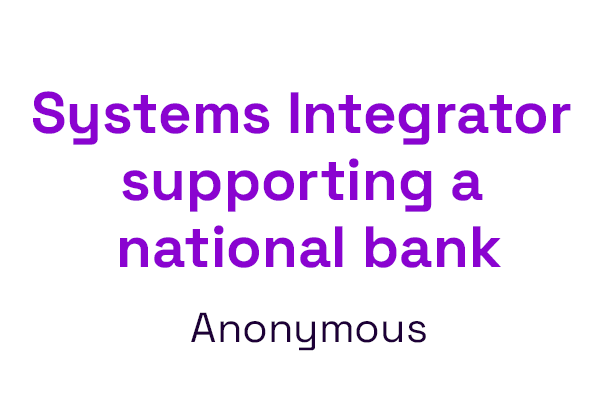
Background
Jumar partners with SI to migrate bank from Gen to COBOL
Overview
A national bank which had taken the strategic decision to migrate from Gen to COBOL tasked its local System Integrator (SI) to deliver this project. The SI subsequently enlisted Jumar’s help to bolster its Gen skills.
Due to the specific nature of the bank’s standards, producing ‘generic’ COBOL wouldn’t suffice. By working with Jumar, the SI was able to leverage Jumar’s unique automated Gen model analysis and migration tooling to meet its requirements.
Jumar delivered
- A solid foundation for migration thanks to model analysis, corruption fixing and a version upgrade
- Automated migration of Gen (IEF/COOL:Gen) models to COBOL for the initial migration phase
- Functionally equivalent, performant, hand-maintainable COBOL code with no software / runtime dependency on Gen
- A high level of customisation and tailoring to align with the bank’s standards, particularly surrounding the use of IMS-DC screen handling and performance as well as functional behaviour extensions
Key benefits
- Minimised risks thanks to a phased approach
- Significant cost reductions compared to manual code migration or maintaining the legacy technology
- The SI and its client bank were able to benefit from Jumar’s long heritage within the worldwide Gen community, which was able to access unique GEN skills both in English and the local language
- Accelerated time to complete migration due to automated code conversion
The project in detail
First stage - Model Analysis:
The first stage to achieving automated migration was to fully understand the source Gen models, their contents and technical interdependencies. For this process Jumar’s Model Analyser, part of the Jumar MAPS’ suite of automation software, was utilised. This included:
- Analysis of the Gen model objects for consistency, action diagram size, complex code structures, view definitions, statement / screen item usage and other complex factors influencing the future transition
- Gen model corruption fixing and identification of opportunities to remove unused / redundant objects
- Investigation into whether code structures needed to be restructured prior to a major transition exercise
- Identification and quantification of any code objects / constructs not supported by Jumar’s software
Customisation:
The analysis provided valuable insights into how to customise the tool. It highlighted that considerable customisation was needed to address the bank’s specific design patterns, coding standards and complex source application. As it was markedly different to a typical ‘standard’ IMS mainframe implementation, it enabled the design pattern mapping for the bank’s required IMS-DC implementation to be precisely defined.
Further customisation surrounded the bank’s adoption of an automated code checker which verified the construction and usage of certain elements, and specific requirements for handling online Gen features such as ‘auto-scrolling’ mechanisms.
Minimising Gen migration risks:
To minimise risk, the project was broken down into phases, with each of these in turn divided into sub-phases. The most demanding technical elements were included within the first phase to build confidence in the solution.
This allowed the customisation of the automation code generator “up-front”, and an “industrialised”, predictable and repeatable process to be defined and subsequently reused quickly, thanks to rigorous testing and new code comparisons against the source models and application behaviour by Jumar and the SI.
Facilitating migration from Gen:
In order to facilitate the technical migration, Jumar’s team of consultants upgraded the relevant models from Gen v4.x to v8.x. This produced a ‘base reference implementation’ which allowed testing of the new code alongside the source, to ensure equivalence with the original models.
Gen objects were transformed using Jumar’s automated XML Code Generation tooling into an interim XML representation. This XML was then processed by Jumar’s highly-customised code generators into maintainable native COBOL with no Gen dependencies remaining and 100% identical functionality.
Enhancing the bank’s functionality:
Jumar also enhanced the functionality of the system in parallel to the 1:1 migration process. Its team of Gen experts enhanced the user experience by adding a feature to handle varying input formats for selected fields. For Example, translation functionality was built in, allowing a range of syntaxes to be accepted.
Alongside this, Jumar accommodated several change requests to refine the generated code, ensuring it was totally aligned with the bank’s standards, architecture, design patterns and coding requirements.
Following this collaboration, the SI presented the COBOL version to the bank for further QA / testing activity before it was successfully deployed into production.
